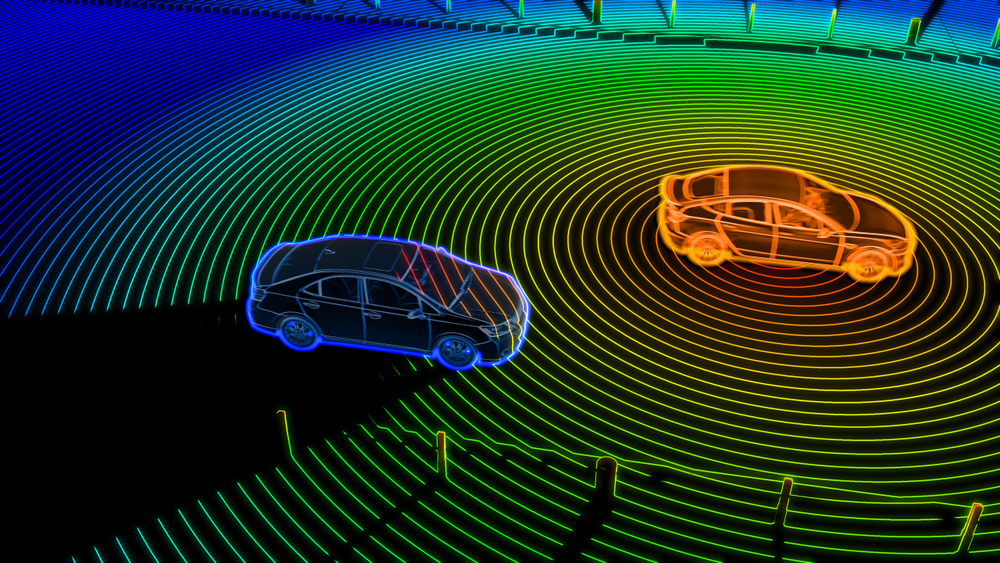
The Future of Autonomous Vehicles: A Q&A with Dr Marco Cecotti
We have all been there before. Stuck in the heart of a metropolitan city centre during the peak rush hour in gratuitous gridlock traffic. You dial-up the volume of the radio and hear the DJ discussing the latest news in technology, and ironically the topic of self-driving cars is brought up.
You swear to yourself that when a driverless car is on the market you will be the first to get your hands on such a car, because – why not? It takes the pain out of driving, you could focus on getting more done in your commute in the comfort of your own car, or you could (like me!) simply fall asleep and let Mr Robot take the wheel.
You have heard it is safe – or is it not? You have also heard of the ethical considerations that the car may take when manoeuvring a life-or-death scenario – will it hurt me? How far away are we, really, from the promises of autonomous vehicles and the benefits that it may bring?
To answer these burning questions, I had the pleasure of interviewing Dr Marco Cecotti, a lecturer in driving automation in the Advanced Vehicle Engineering Centre at Cranfield University where he gave an audience of Chevening Scholars a talk on autonomous vehicle technology during the Innovative Industries – The Future of Mobility event held on 27th January 2020.
Nick: First of all, thank you for taking part in this interview. Could you please introduce yourself and tell us about the type of work that you are doing in Cranfield University?
 Dr Marco Cecotti: I have recently joined the Advanced Vehicle Engineering Centre (AVEC) as a lecturer in driving automation. My role involves a similar split of teaching and research activities.
Dr Marco Cecotti: I have recently joined the Advanced Vehicle Engineering Centre (AVEC) as a lecturer in driving automation. My role involves a similar split of teaching and research activities.
From the teaching point of view, I am supporting the course director Daniel Auger with the preparation of the new MSc in Connected and Autonomous Vehicle Engineering. That starts in October this year. I am also helping our current students in Automotive and Motorsport courses with group projects and individual research projects.
Regarding my research activities, I am supporting the delivery of two government-funded projects: HumanDrive and TASCC. The focus of HumanDrive is to develop an autonomous vehicle with natural, human-like behaviour. The project is sponsored by Innovate UK and it is managed by a large consortium led by Nissan. Our role is to provide a framework to evaluate the human-like behaviour of autonomous vehicles, and to test the vehicle developed during this project using the facilities that we have in our campus, in particular the MUEAVI, our proving ground.
TASCC is a large project sponsored by the Engineering and Physical Sciences Research Council (EPSRC) and Jaguar Land Rover, which is divided into smaller, more focused sub-projects. One of them is CogShift, where Cranfield and UCL are working to improve the transition from autonomous driving to human driving in passenger cars. In particular, we are developing control algorithms to generate haptic cues, taking into account the level of attention of the driver.
Nick: The general public has heard about the progress and efforts from the likes of private companies such as Tesla and Waymo from the USA. How does the type of work here at Cranfield University differ from those undertaken elsewhere?
Dr Marco: In general, private companies and universities operate at different technology readiness levels (TRLs). Private companies are working to improve the reliability of their entire autonomous driving system, for all users and all operating conditions, so they can sell their product to the general public. Universities, instead, try to solve specific problems and to validate their solution for a limited set of scenarios, even when the applicability could be wider.
Cranfield University is able to engage with private companies to deliver solutions at higher TRLs than most universities. This is thanks to the expertise of our team and our research facilities, including our proving ground and our vehicle fleet.
In addition to this, our technical focus is not limited to passenger cars, but we have extensive experience with off-road and motorsport applications, and we are looking at projects in the military and the airside domain.
Nick: On the point of sustainability, there seems to be a great push for road users to get on public transportation. A driverless car, as amazing as they may be, is still a car, a car which takes up space on the road. They pollute, and they require resources to build infrastructure to support it. With that in mind, what are driverless cars doing to have a sustainable impact?
Dr Marco: Intrinsically, autonomous vehicles are no more environmentally friendly than human-driven vehicles, however they enable services and technologies that can make a significant impact on the environment.
Driverless vehicles will likely proliferate in the form of automated taxis and busses. The technology will reduce the cost of taxi and bus fares, making them affordable to a wider share of the population.
Thanks to vehicle connectivity, real-time rerouting capabilities, and the usage of fleet management tools, multiple users will be able to share the same taxi for part of their journey, with minimal effect on the duration of the ride. This would blur the line between a large taxi and a bus, making these services even more affordable and convenient.
All of these transportation options, enabled by the automation of our vehicles, will have an environmental impact in the form of reduction of parking spaces, and congestions. Moreover, by reducing the need for privately-owned cars, we will be able to reduce car waste.
In my view, however, the most positive impact on the environment will come from stringent regulation on these heavily-utilised taxis and busses, to promote the establishment of a modern, efficient, and emission-free fleet of vehicles in our cities.
Nick: How far off are driverless cars as a reality?
Dr Marco: I think they are a reality right now. Although there are no autonomous passenger cars available to the general public yet, I expect some taxi services to be announced over the next few months.
In the meantime, there are several reports of autonomous cars from Waymo moving across Arizona without a safety driver. A few states in the US have already approved regulations to allow this to happen, and the UK has just announced that they will allow trials without safety drivers by the end of this year.
Around the world, there have been already a few public trials of autonomous pods, moving on pedestrian areas without a safety driver.
Over time, the operating envelope of the autonomous vehicles will grow to cover more and more scenarios, but it will take a long time to reliably replace human drivers in every reasonable driving task.
Nick: The Moral Machine Experiment yielded three rules to attempt to answer the ethical dilemmas that present themselves when a machine needs to make a decision when it has to decide to crash one way or another. The study found that there has been generally three accepted rules: 1) save humans over animals; 2) save the greater number of people and 3) save the children. However, these views change from culture to culture. Is this an area that your work is looking at? If so, how are they addressing these challenges?
Dr Marco: We are very aware of these challenges. In fact, in our upcoming course on Autonomous and Connected Vehicle Engineering we are offering a module on ethics, safety and regulation.
I am not an expert in this field, but I know that the response to ethical dilemmas varies in different communities. My view is that ethics should inform the local regulatory framework and car manufacturers should rely on the framework to make design decisions. I don’t think we should expect automotive companies to make ethical decisions, but at the moment there is no way around it: without the introduction of very detailed regulations on the behaviour of autonomous vehicles, automotive companies are forced to answer challenging ethical question.
Nick: Thank you for your time, Dr Marco. Those are all the questions I have for you today. As a closing note, do you have any further thoughts that you would like to say to people curious about driverless cars?
Dr Marco: Driverless cars are a very popular topic these days, so there is a lot of information available online. For any burning question that can’t be easily answered online, I encourage you to get in touch with us. However, due to our daily commitments, I can’t promise that we will always be able to answer individual questions.
In general, we are keen on engaging more with the public, so we are happy to support group events like this one with the Chevening Scholars.
For any question about events or relevant activities in Cranfield, I encourage you to get in touch with me (m.cecotti@cranfield.ac.uk) or any of my colleagues in AVEC.

